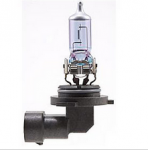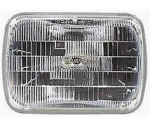I just watched a video published by one of the major auto parts dealers in which instructions were given for rejuvenating the plastic covers over headlights on modern cars. My question is: Why are these covers there?
Once upon a time there was a headlight which was enclosed in glass. Basically it was a large light bulb. If it needed cleaning I wiped it with a rag and that was it. According to this video it is necessary to use an electric drill with a polishing pad treated with a special polishing compound. Then there was a treatment with three different pads which had to be rubbed on (making sure the headlight stayed wet during treatment) in three different directions depending on which pad was being used. Then the drill with the polishing pad and compound was used again. Nest the headlight was wiped and was crystal clear. WOW!
The narrator on the video suggested that if you didn't buy this kit to clean your headlights you would have to buy new headlights for a lot more money.
Were these plastic covers developed just to give someone the opportunity to come up with this complicated and probably expensive treatment?
Bring back the Good Old Days!
Once upon a time there was a headlight which was enclosed in glass. Basically it was a large light bulb. If it needed cleaning I wiped it with a rag and that was it. According to this video it is necessary to use an electric drill with a polishing pad treated with a special polishing compound. Then there was a treatment with three different pads which had to be rubbed on (making sure the headlight stayed wet during treatment) in three different directions depending on which pad was being used. Then the drill with the polishing pad and compound was used again. Nest the headlight was wiped and was crystal clear. WOW!
The narrator on the video suggested that if you didn't buy this kit to clean your headlights you would have to buy new headlights for a lot more money.
Were these plastic covers developed just to give someone the opportunity to come up with this complicated and probably expensive treatment?
Bring back the Good Old Days!



